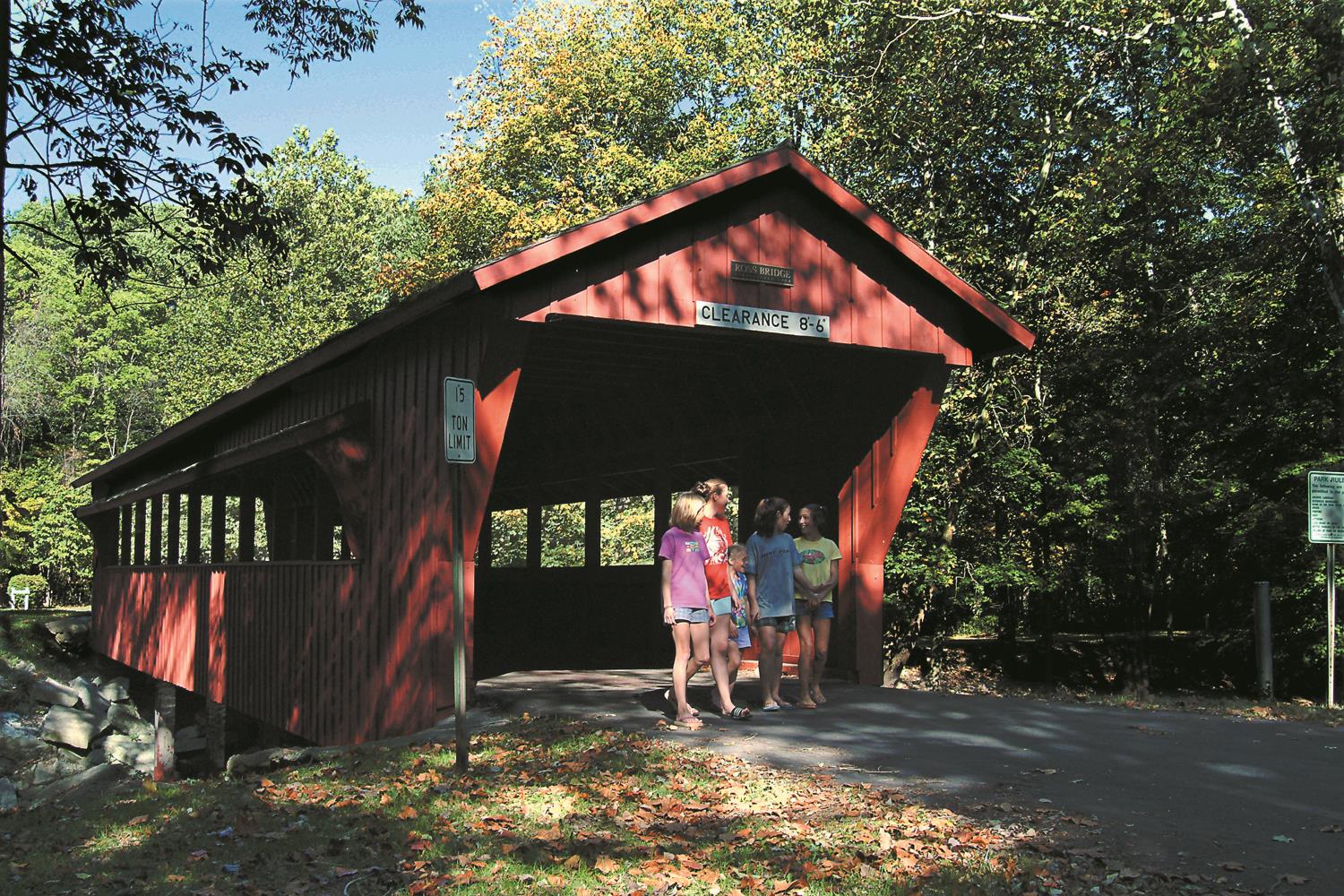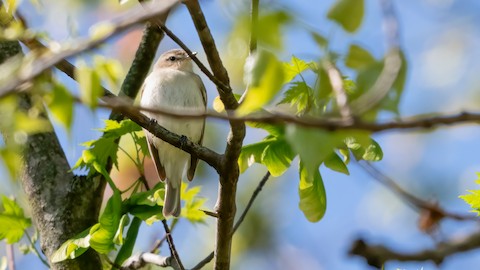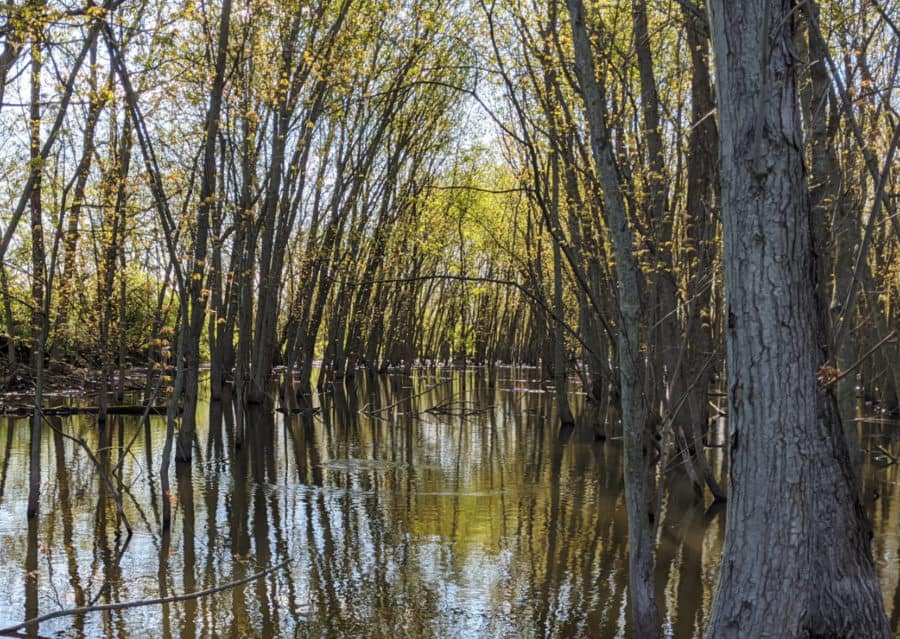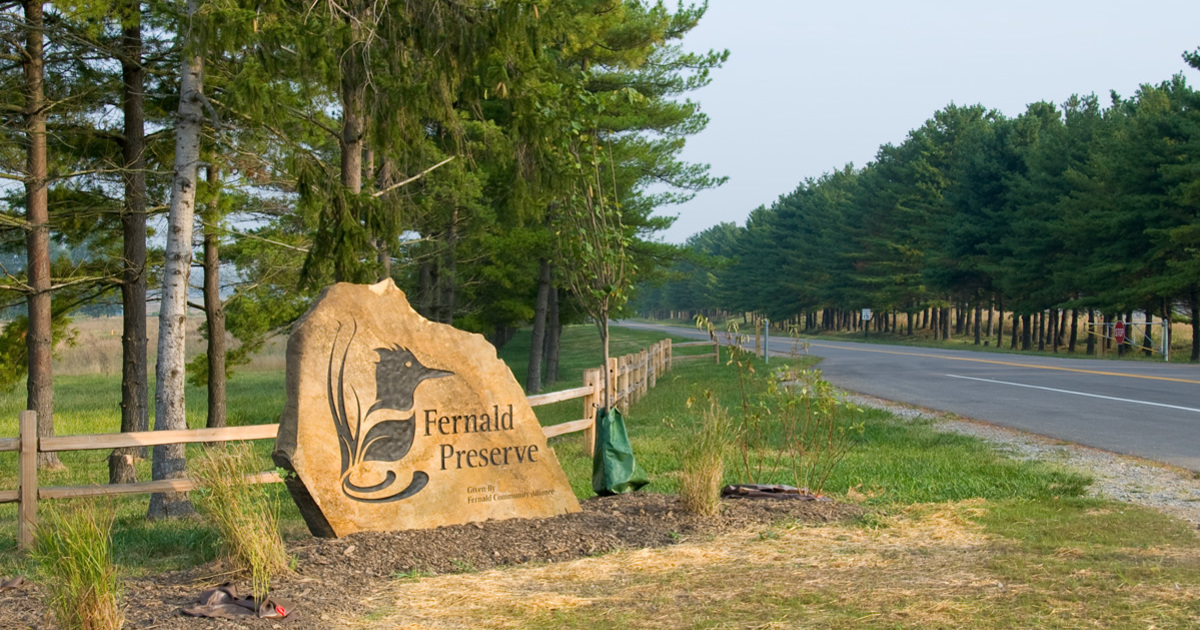 Check out these 5 Riverway birding hotspots recognized by the Ohio Ornithological Society and the National Audubon Society.
Check out these 5 Riverway birding hotspots recognized by the Ohio Ornithological Society and the National Audubon Society.
You don’t have to travel far to find some locations in our Riverway that boast well over 200 bird species.
The Lower Great Miami River in particular is designated as an Important Bird Area, (IBA) which includes Pyramid Hill Sculpture Park, Rentschler Forest MetroPark, and Chrisholm MetroPark in Butler County, and Crains Run Nature Park in Montgomery County. The IBA program began in 1999 with a gathering of bird conservation stakeholders and has resulted in the documentation and research of over 100 sites in Ohio.
#1. Tawawa Park, Sidney
- While lower on the species count list at 86 observed by eBird data, this park is recognized as a great location for yellow-throated warblers during migration in Ohio.
- Plus, you can stop at local Sidney gems like The Spot or Greenhaus Coffee to complete your trip.

#2. Charleston Falls Preserve, Tipp City
- From the Ohio Ornithological Society, “Charleston Falls Preserve is the most visited Park District property in Miami County with over 216 acres of prairie and forests. This beautiful park is the perfect place to hike and view wildlife. Uncommon plants such as wild columbine, walking fern, purple cliff break, and rock honeysuckle grace the limestone faces of the surrounding gorge. The most unusual feature of this preserve is the unique waterfall. The Falls can rightly be called a “Miniature Niagara” because its rock strata are the same as Niagara Falls. Originating from small underground springs several miles to the east, the stream creating the falls plummets 37 feet and then continues its meandering journey to the Great Miami River.”
- 123 species have been recorded at this hotspot according to eBird.
 #3. Taylorsville MetroPark, Five Rivers MetroParks
#3. Taylorsville MetroPark, Five Rivers MetroParks
Ohio Ornithological Society highlights this park as a birding hotspot:
- Historic remnants of the Miami-Erie Canal and the once-thriving village of Tadmor mix with scenic forests to provide an interesting experience for both the hiker and bicyclist. In addition, fascinating rock formations with overhangs and small cavitations with calcite ribbons can be found.
- Taylorsville MetroPark contains exceptional examples of a mature upland forest with many spring wildflowers, second-growth woodlands, natural succession areas, a few aging pine stands, a few managed grasslands, and extensive floodplain forests along the Great Miami River Corridor.
- A section of the Buckeye Trail and the North Country Trail runs through Taylorsville MetroPark.
- eBird data shows 175 known species to visit.

#4. Gilmore MetroPark, MetroParks of Butler County
- On a top birding list for Ohio according to OOS data
- 253 species observed (the highest species count is Headlands Beach State Park with 298 for comparison)
From Ohio Ornithological Society: “Depending on water levels, the Cattail Marsh area can be good for waterfowl, herons and egrets, or shorebirds. During spring and fall migration, the trails around South Pond are good for passerines. Cattail Marsh is often good for sparrows, with a chance of seeing LeConte’s or Nelson’s Sharp-tailed Sparrows in the fall, again depending on water levels. It is not a very large area, so birders can get around the entire area fairly quickly.”
According to the National Audubon Society, this park was designated as an Important Bird Area:
- “Located within the City of Hamilton, 268-acre Gilmore MetroPark was designated as an Important Birding Area by the National Audubon Society. The park’s wetland areas are an important habitat for shorebirds, waders and waterfowl. The park’s wetland areas in depth seasonally, with the best birding opportunities happening in spring and fall during migration season.”
 #5. Fernald Preserve, Hamilton
#5. Fernald Preserve, Hamilton
Ohio Ornithological Society highlights this park:
“The Fernald Preserve features 140 acres of wetland habitat, 400 acres of forests and 360 acres of grasslands including tall grass prairies. The preserve currently has about 2.5 miles of trails with additional trail construction planned for 2009. Lodge Pond trail, located along the site’s access road approximately 1/8 mile from the Willey Road entrance, provides access to wetlands and prairies. In addition to a wide range of migratory waterfowl, this area provides excellent viewing opportunities for a variety of prairie species including dickcissels, bobolinks, grasshopper sparrows and eastern meadowlarks. Shingle Oak trail primarily spans woodland habitat and is a good choice for viewing neo-tropical migrants as well as a variety of summer nesters. The Weapons-to-Wetlands trail features an overlook that provides excellent viewing for migrating waterfowl in the spring and fall as well as a variety of raptors in the winter months. The 3.5 mile Trestle Trail, completed in September 2009, spans prairies, upland forests, open water and a riparian corridor.”
- NOTE: A strict no pets allowed policy is in effect at all times at the Fernald Preserve.
